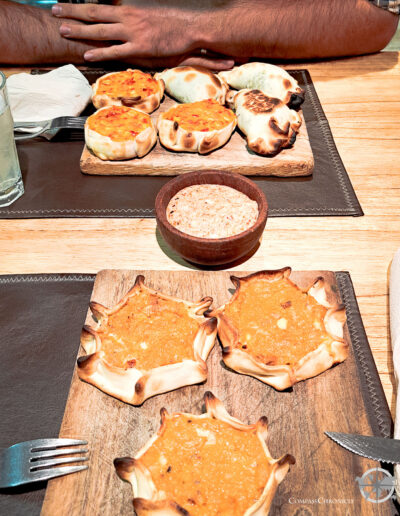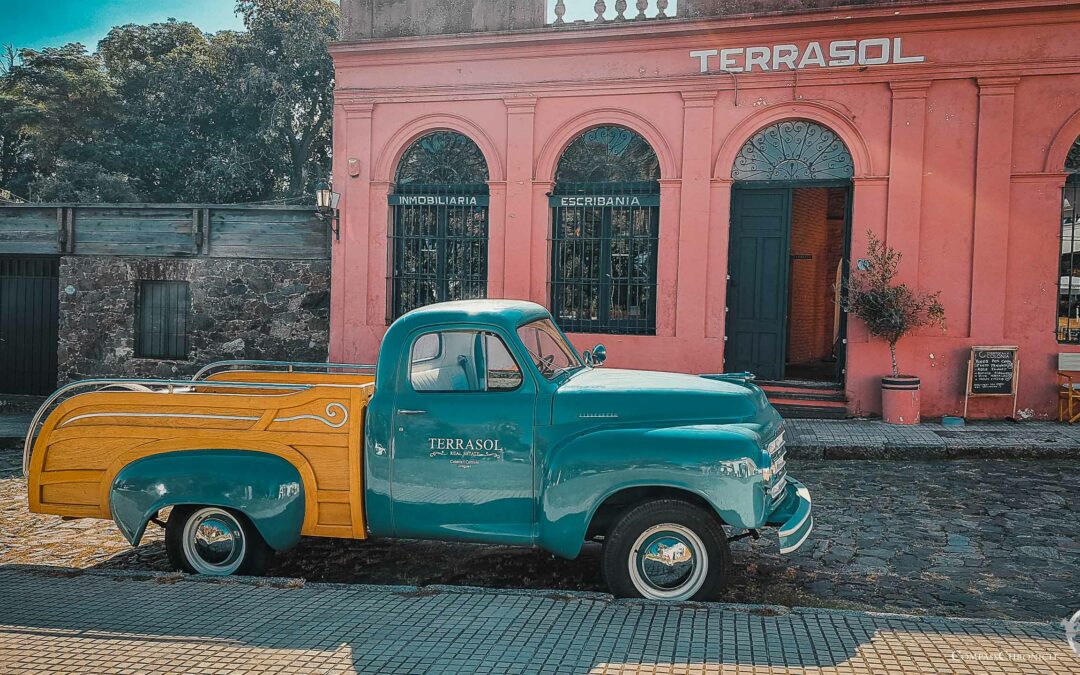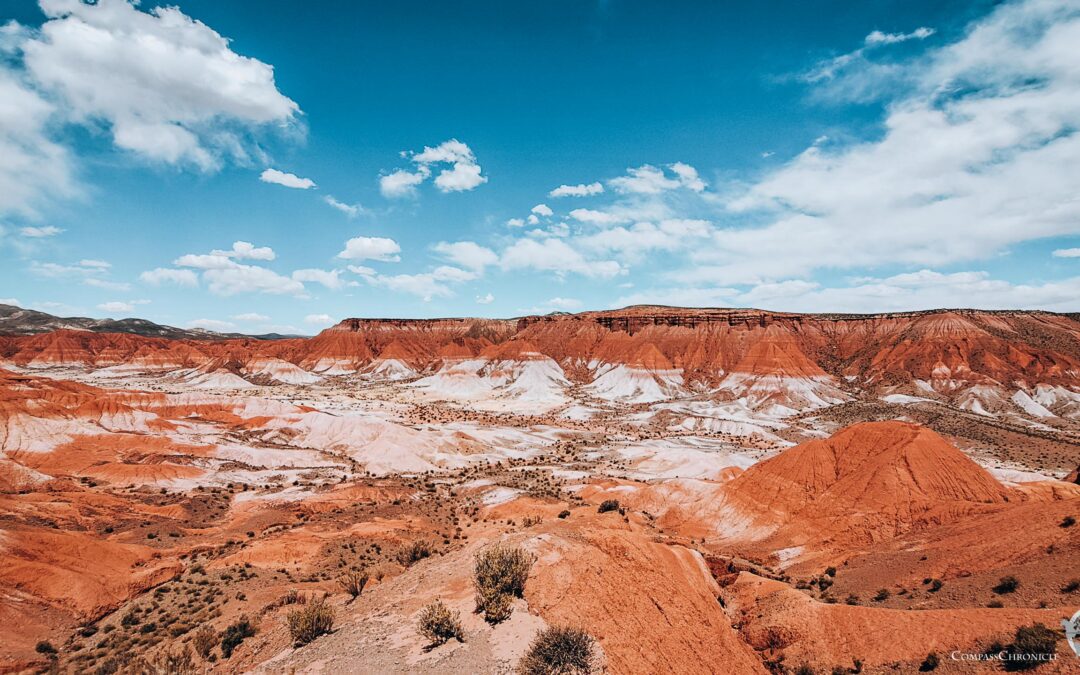We are now quite a bit further south, but of course still in Argentina. Driving long distances here is much more relaxed and, above all, faster, as there are (finally) well-developed roads again.
The second largest city in Argentina, Córdoba, welcomes us from the very first minute with its charm as a student city. Of course, the fact that we park right next to the city’s largest university campus also contributes to this. It’s been a long time since we’ve seen so many young people in a big city. And Córdoba is really big, the metropolitan region of Córdoba has around 1.5 million inhabitants.
Colonial architecture mixed with modernity
Various styles are present in the center of Córdoba. Colonial architecture is a prominent feature, but always mixed with modern elements. For example, the stores are often marked with modern neon signs on old brick walls. Or another building has been renovated up to the second floor and gives the pedestrian zone a historical, colonialist impression. Inside and set back, a tall, modern tower emerges from the same building foundation and rises another twelve stories into the sky. This is how active modernization merges with Argentina’s colonial history in Córdoba. And again and again in between we find older churches and the cathedral of Córdoba in well-renovated condition. But this is almost the end of our sightseeing tour of the city. There are still a few well-kept parks, otherwise we are interested in the cultural side – the small arts scene in Córdoba.
Craft market
A local craft market is held every weekend in Barrio Güemes. At this market, we find all kinds of bric-a-brac. From beautiful paintings to the omnipresent necklaces and bracelets, everything is there. Once again, we content ourselves with looking at the many handicrafts and don’t buy anything. A craft market like this is always something special. Here in Córdoba, the young population can make a name for themselves and earn a living by making lots of handmade things. Mate is also omnipresent at the craft market in Güemes. Special straws with a sieve at one end and cups made from gourds can be found everywhere. However, the range is a little too expensive for us to only try a little mate. As we describe in the next section, there is a real culture surrounding mate, therefore we are not at all surprised by the high prices.
Living Mate culture
On our walks through Córdoba, we notice the mate culture, especially in the evening. Everywhere in the parks, on benches, on the ground in the meadow, but also in stores behind the counters, there are thermos flasks with hot water on the one hand and the special mate cups with the metal straws on the other. People often sit together, chatting and sipping their mate teas. The mate cup is also often passed around in groups. The main ingredient is the leaves of the mate bush. There are also various flavoring herbs that refine the mate. Well, we are not yet mate specialists, connoisseurs would probably despise us for simply calling it tea. Anyway, it’s a caffeinated infusion drink made from fermented herbs and water. For us, the whole thing feels like a ritual around a special type of tea.
After this detour – we wanted to discover the city of Córdoba for ourselves and simply took a quick 1,500 km detour to do so – we head west again: roughly towards Chile. This is how we will spend the next few months. Switching back and forth between Chile and Argentina from time to time to experience both sides of the Andes along their entire length from north to south.
But our first direct destination is Mendoza, Argentina’s world-famous wine region. There we will meet up with friends again, with whom we want to visit the wineries. So, look forward to our next post.




















0 Comments